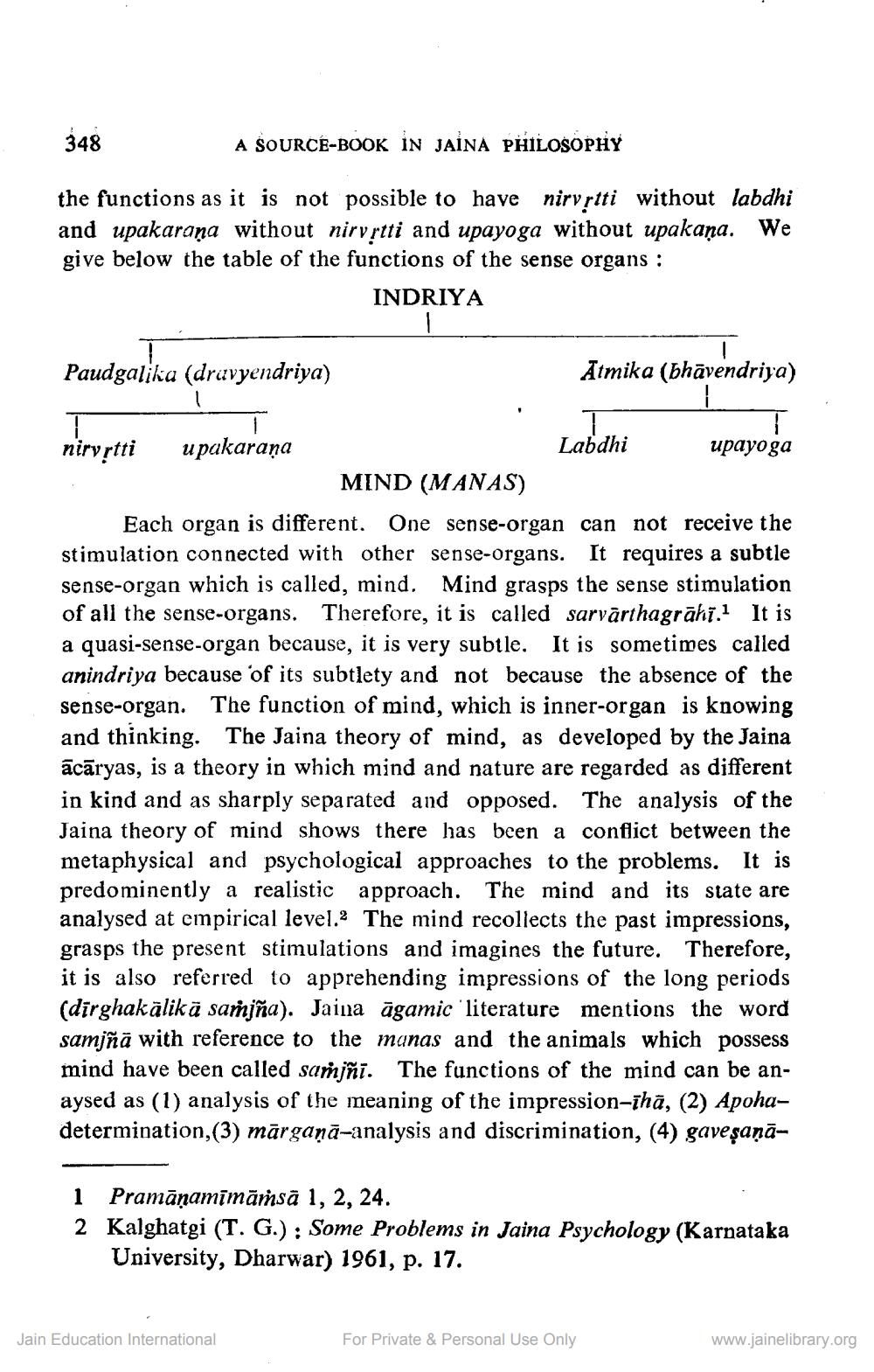________________
348
A SOURCÉ-BOOK IN JAỈNA PHILOSOPHY
the functions as it is not possible to have nirvrtti without labdhi and upakaraṇa without nirvrtti and upayoga without upakaņa. We give below the table of the functions of the sense organs :
INDRIYA
Paudgalika (dravyendriya)
Atmika (bhāvendriya)
nirvytti
upakaraņa
Labdhi
upayoga
MIND (MANAS)
Each organ is different. One sense-organ can not receive the stimulation connected with other sense-organs. It requires a subtle sense-organ which is called, mind. Mind grasps the sense stimulation of all the sense-organs. Therefore, it is called sarvārthagrāhi.1 It is a quasi-sense-organ because, it is very subtle. It is sometimes called anindriya because of its subtlety and not because the absence of the sense-organ. The function of mind, which is inner-organ is knowing and thinking. The Jaina theory of mind, as developed by the Jaina ācāryas, is a theory in which mind and nature are regarded as different in kind and as sharply separated and opposed. The analysis of the Jaina theory of mind shows there has been a conflict between the metaphysical and psychological approaches to the problems. It is predominently a realistic approach. The mind and its state are analysed at empirical level. The mind recollects the past impressions, grasps the present stimulations and imagines the future. Therefore, it is also referred to apprehending impressions of the long periods (dirghakālikā sarjña). Jaina āgamic literature mentions the word samjñā with reference to the manas and the animals which possess mind have been called saṁjni. The functions of the mind can be anaysed as (1) analysis of the meaning of the impression-īhā, (2) Apohadetermination,(3) mārgaņā-analysis and discrimination, (4) gaveşaņā
1 Pramāņamīmāṁsā 1, 2, 24. 2 Kalghatgi (T. G.): Some Problems in Jaina Psychology (Karnataka
University, Dharwar) 1961, p. 17.
Jain Education International
For Private & Personal Use Only
www.jainelibrary.org




